Soda bread is a timeless, no fuss bread loved for its simplicity and deliciously rustic texture. Unlike traditional yeast breads, this Irish staple relies on baking soda and buttermilk for its rise, making it one of the easiest breads to whip up at home. Whether you’re a seasoned baker or a beginner, this guide will walk you through everything you need to know about it, from its fascinating history to foolproof recipes and expert baking tips.
Table of Contents
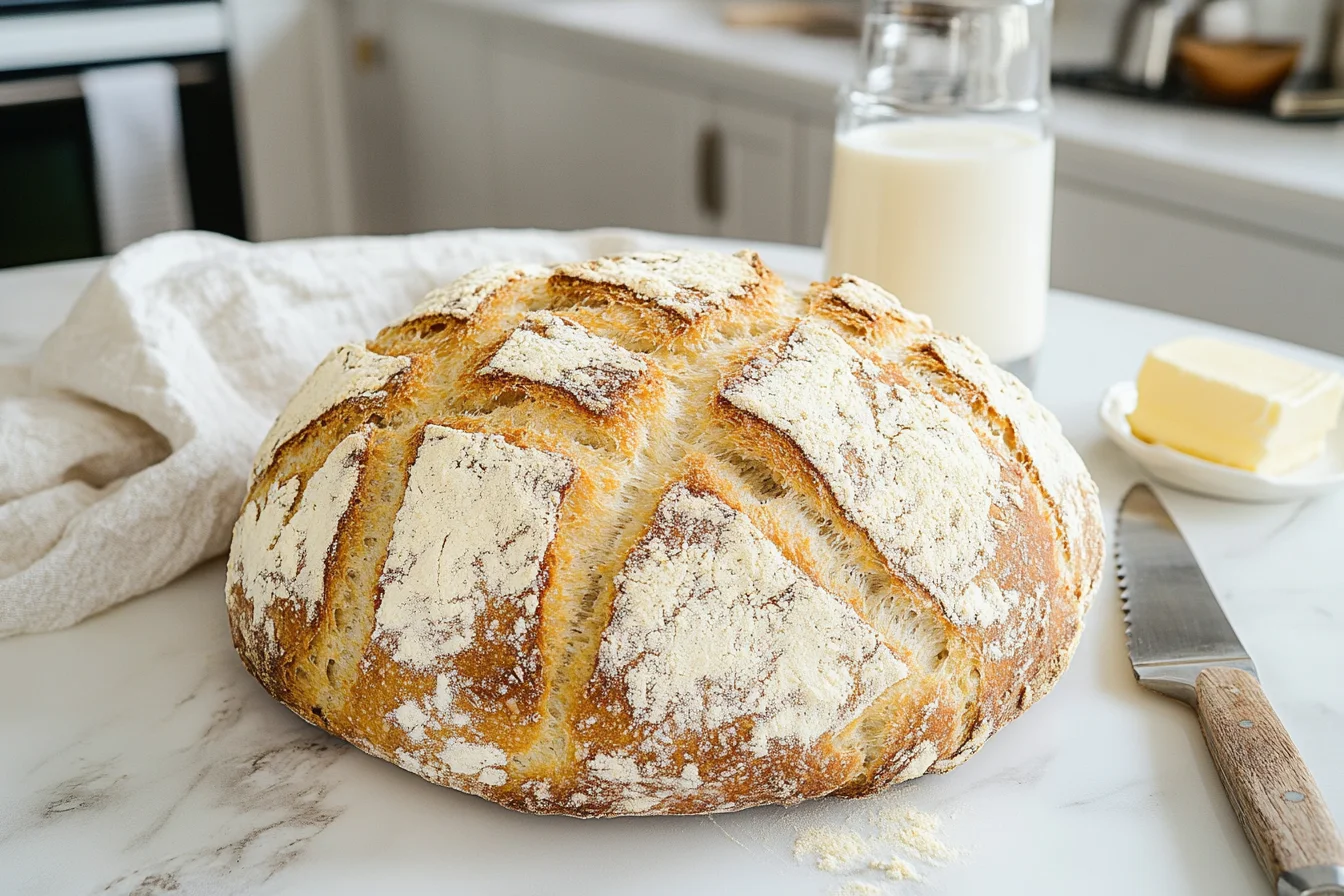
Soda Bread
Ingredients
- 4 cups all purpose flour or half whole wheat for a heartier loaf
- 1 tsp baking soda
- 1 tsp salt
- 1¾ cups buttermilk or milk + 1 tbsp vinegar as a substitute
Instructions
- Preheat the oven to 425°F (220°C). Lightly flour a baking sheet or cast iron skillet.
- Mix dry ingredients – In a large bowl, whisk together the flour, baking soda, and salt.
- Add buttermilk – Make a well in the center and gradually pour in the buttermilk. Stir until a shaggy dough forms.
- Shape the dough – Lightly knead for 30 seconds until it comes together. Do not overwork.
- Form a round loaf – Place on the prepared baking sheet and use a sharp knife to cut a deep cross on top.
- Bake for 30-40 minutes until golden brown. The bread is done when it sounds hollow when tapped on the bottom.
- Cool on a wire rack before slicing. Serve warm with butter or jam.
Notes
- For a crispier crust, bake in a preheated cast iron skillet.
- If the top browns too quickly, loosely cover with foil for the last 10 minutes.
- Store in an airtight container for up to 2 days, or freeze for longer freshness.
What is Soda Bread?
The Origins of Soda Bread
It has been a beloved staple for centuries, particularly in Ireland. But did you know that its origins trace back to Native American cooking? Early indigenous communities used pearl ash, a natural form of baking soda, to leaven their breads. When baking soda became commercially available in the 19th century, Irish households quickly adopted it as a reliable leavening agent, giving birth to the soda bread we know today.
Why It’s Called Soda Bread
The name “soda bread” comes from its key ingredient: baking soda. Instead of yeast, which requires hours to rise, baking soda reacts instantly with acidic buttermilk to create carbon dioxide bubbles. This reaction gives the bread its signature airy texture and eliminates the need for kneading or proofing. The result? A quick, crusty loaf perfect for everyday baking.
The Key Ingredients of Traditional Soda Bread
At its core, authentic one is made with just four simple ingredients:
- Flour – Typically, white or whole wheat flour is used for a hearty texture.
- Baking soda – The magic ingredient that replaces yeast and makes the bread rise.
- Salt – Essential for flavor enhancement.
- Buttermilk – Provides the acidity needed to activate the baking soda and keep the bread moist.
Some modern versions add sugar, butter, raisins, or even eggs for extra flavor and texture. However, the traditional Irish version remains delightfully simple and rustic.
A Brief History
The Irish Connection: How it Became an Irish Staple

While soda bread is deeply associated with Ireland, its roots actually extend beyond the Emerald Isle. The concept of using a chemical leavening agent like baking soda was first observed in Native American cooking. However, it was the Irish who truly embraced this method in the 19th century.
During this time, Ireland faced economic hardship, and expensive ingredients like yeast were not widely available. Instead, Irish bakers turned to baking soda as a cost effective way to make bread rise. Combined with buttermilk, which was a common byproduct of butter churning, this simple bread became a household necessity.
The Role of Soda Bread in Irish Culture and Traditions
In Ireland, it isn’t just food, it’s a cherished tradition. Historically, it was baked daily in many homes, often cooked in a cast iron pot over an open fire. The signature cross shaped cut on top wasn’t just decorative; it was believed to ward off evil spirits and ensure a successful bake.
Today, it plays a starring role in Irish celebrations, especially on St. Patrick’s Day. You’ll find it served alongside stews, soups, or simply enjoyed with butter and jam.
Variations of Soda Bread Across the World
Though traditionally Irish, soda bread has evolved across different cultures. Here are some popular variations:
- Irish Brown Soda Bread – Made with whole wheat flour for a heartier, more nutritious loaf.
- American Sweet Soda Bread – Often includes sugar, butter, raisins, or caraway seeds.
- Scottish Bannock – A similar soda raised bread cooked on a griddle.
- Gluten Free Soda Bread – A modern twist that swaps wheat flour for alternatives like almond or oat flour.
Traditional Recipe
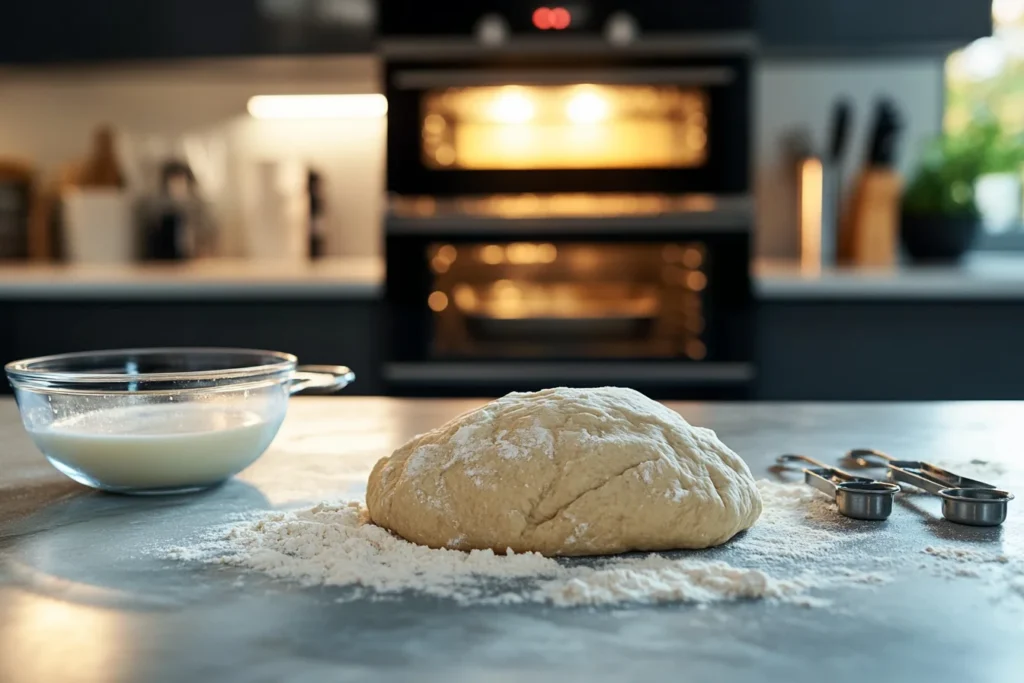
Classic Ingredients and Their Functions
Authentic soda bread requires just four ingredients:
- Flour – Provides structure. Traditionally, a mix of white and whole wheat flour works best.
- Baking Soda – The key leavening agent that replaces yeast.
- Salt – Enhances flavor and balances acidity.
- Buttermilk – Reacts with baking soda to create the bread’s rise and adds moisture.
Many modern recipes add sugar, butter, eggs, or dried fruit, but these aren’t part of the traditional Irish method.
Step by Step Guide to Making Traditional Soda Bread
Follow these easy steps to create your own homemade soda bread:
- Preheat your oven to 425°F (220°C). If you have a cast iron skillet or Dutch oven, use it for an authentic touch.
- Mix the dry ingredients – In a large bowl, combine 4 cups of flour, 1 teaspoon of baking soda, and 1 teaspoon of salt.
- Add the buttermilk – Make a well in the center of the flour and pour in 1¾ cups of buttermilk. Mix lightly with a wooden spoon until the ingredients come together.
- Shape the dough – Turn it onto a floured surface and knead lightly for no more than 30 seconds. Overworking the dough can make the bread tough.
- Form a round loaf and place it on a baking sheet. Use a sharp knife to cut a deep cross on top.
- Bake for 30-40 minutes until golden brown. Tap the bottom, if it sounds hollow, it’s done.
- Cool before slicing and enjoy with butter, jam, or cheese.
Common Mistakes to Avoid When Making it
Even though soda bread is easy to make, a few pitfalls can affect the final result:
❌ Over kneading – Too much handling develops gluten, making the bread dense.
❌ Too much flour – Extra flour can dry out the dough, leading to a crumbly loaf.
❌ Skipping the cross cut – This allows steam to escape and helps the bread cook evenly.
❌ Using expired baking soda – If your baking soda is old, the bread won’t rise properly.
Master these techniques, and you’ll have a perfect loaf of soda bread every time.
Modern Variations
Sweet and Savory Twists on Soda Bread
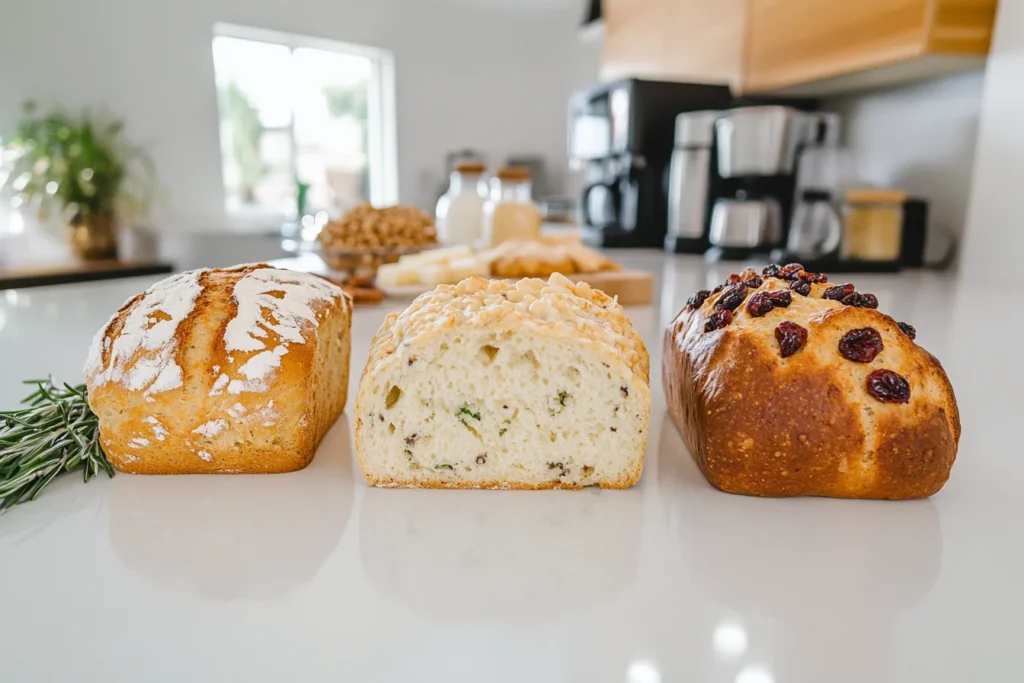
While traditional soda bread is simple, modern variations have introduced exciting flavors. Some bakers add sugar, honey, or dried fruits for a sweet touch, while others incorporate herbs, cheese, or even bacon for a savory twist.
Popular adaptations include:
- Raisin or Cranberry – A lightly sweet version, perfect with tea.
- Cheddar and Chive – Great for pairing with soups.
- Garlic and Rosemary – A fantastic side for Italian dishes.
- Chocolate Chip – A fun dessert alternative.
Gluten Free and Vegan Soda Bread Options
For those with dietary restrictions, soda bread can still be enjoyed. A gluten free version swaps wheat flour for oat flour, almond flour, or a gluten free blend. Meanwhile, a vegan version replaces buttermilk with plant based milk and vinegar.
Simple Gluten Free Soda Bread Recipe
- 2 cups gluten free flour blend
- 1 tsp baking soda
- ½ tsp salt
- 1 cup dairy free buttermilk (almond milk + vinegar)
Mix, shape, and bake at 400°F (200°C) for 35-40 minutes. That’s it.
How to Customize Soda Bread for Different Flavors
Once you’ve mastered the basics, it’s easy to experiment. Want more texture? Try adding nuts or seeds. Need a crunchier crust? Brush with butter before baking. Prefer a softer loaf? Wrap it in a damp towel after baking.
No matter your preference, it is endlessly adaptable.
Expert Tips for Perfect Soda Bread
How to Achieve the Ideal Texture and Crust
A great soda bread has a crisp crust and a soft, slightly dense interior. To get it just right:
✅ Use fresh baking soda – Old soda won’t give a good rise.
✅ Don’t overwork the dough – Too much handling toughens the bread.
✅ Preheat the oven properly – A hot oven ensures a good crust.
For an extra crusty exterior, bake on a pizza stone or cast iron skillet.
The Best Flour Choices for Soda Bread
While all purpose flour works fine, using a blend of whole wheat and white flour gives a nutty flavor and better structure. Experiment with:
- Rye flour for a hearty loaf.
- Spelt flour for a rustic touch.
- Oat flour for a gluten free option.
How to Store and Reheat Soda Bread Properly
To keep your soda bread fresh:
- Wrap in a clean towel and store at room temperature for up to 2 days.
- Store slices in airtight bags and freeze for up to 3 months.
For reheating:
- Toast slices for a quick fix.
- Wrap in foil and warm in a 350°F (175°C) oven for 10 minutes.
Follow these tips, and you’ll have perfect soda bread every time.
Pairing Soda Bread with Meals
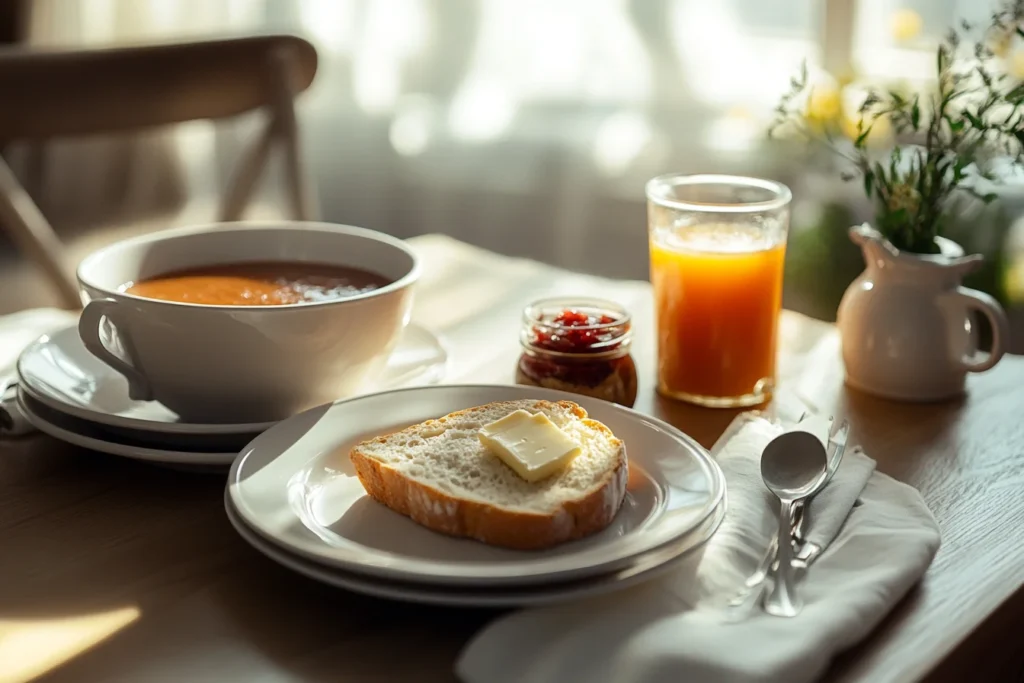
It is a versatile delight that pairs well with a variety of dishes. Whether you enjoy it as a snack, with soup, or as a side, this rustic bread can complement any meal.
Best Spreads and Toppings for Soda Bread
A simple slice of soda bread is delicious on its own, but the right toppings can enhance its flavor. Here are some of the best spreads to try:
- Butter and Jam – A classic choice for a lightly sweet and creamy taste.
- Honey or Maple Syrup – Perfect for those who love a natural sweetness.
- Cream Cheese and Smoked Salmon – A sophisticated, savory option.
- Nut Butter and Banana Slices – A nutritious and energy boosting choice.
For a richer experience, try warming up your soda bread before adding your favorite spread, it enhances the flavors.
How to Serve it for Breakfast, Lunch, and Dinner
Soda bread fits into any meal of the day. Here’s how you can enjoy it:
🍳 Breakfast: Serve with scrambled eggs and bacon, or enjoy with Greek yogurt and fruit.
🥣 Lunch: Pair with hearty soups like tomato, potato, or Irish stew.
🥩 Dinner: Serve alongside roast meats, grilled fish, or creamy pasta dishes.
This bread’s mild yet hearty taste makes it a great complement to both light and rich meals.
Nutritional Information for Soda Bread
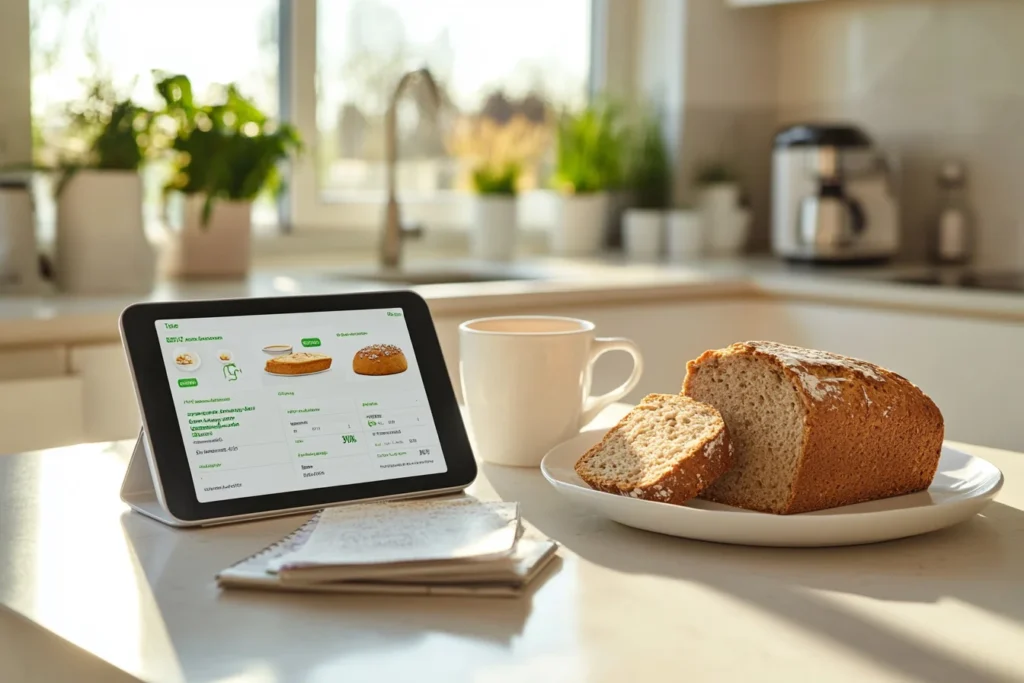
While it is a simple and wholesome option, it’s good to know its nutritional content to make informed choices. The values below are based on a 100g serving of traditional soda bread.
Nutritional Content (Per 100g)
Below is a breakdown of the estimated nutritional values for traditional Irish soda bread, made with white flour, buttermilk, baking soda, and salt.
| Nutrient | Amount (Per 100g) |
|---|---|
| Calories | 220 kcal |
| Carbohydrates | 45g |
| Protein | 6g |
| Fat | 1.5g |
| Saturated Fat | 0.5g |
| Fiber | 2.5g |
| Sugar | 2g |
| Sodium | 400mg |
| Calcium | 80mg |
| Iron | 1.5mg |
Health Benefits of Soda Bread
Soda bread is a great source of carbohydrates, making it a quick energy boost. It’s also low in fat and contains fiber, especially when made with whole wheat flour. Additionally, the calcium from buttermilk contributes to strong bones.
To make it even healthier, consider using whole grain flour for extra fiber or adding seeds and nuts for additional nutrients.
FAQs: Common Questions About Soda Bread
Many people have questions about soda bread, let’s clear up some of the most common ones.
1. What makes soda bread different from other breads?
Unlike yeast based breads, soda bread relies on baking soda and buttermilk for leavening. This makes it quicker and easier to prepare, with a denser, crumbly texture.
2. Can I make it without buttermilk?
Yes. A combination of milk and lemon juice or vinegar can be used as a substitute. Simply add 1 tablespoon of lemon juice or vinegar to 1 cup of milk, let it sit for a few minutes, and you have a perfect replacement.
3. How do I know when it is fully baked?
Tap the bottom of the loaf, if it sounds hollow, it’s done. A fully baked soda bread should also have a golden brown crust and be firm to the touch.
4. Why does my soda bread turn out too dense?
A dense loaf usually happens due to over mixing the dough. Remember, soda bread doesn’t need kneading like yeast based bread. Mix the ingredients until just combined, then shape and bake immediately for the best texture.
Now that you know everything about soda bread, it’s time to bake your own perfect loaf. 🍞
Looking for more delicious recipes to try alongside your soda bread? If you love hearty homemade bread, you might also enjoy pairing it with a warm, comforting dish like this Ground Beef Stroganoff Recipe.
For a delightful breakfast twist, consider serving it with Banana Oatmeal Muffins for a wholesome and satisfying start to your day.
And if you’re in the mood for a light yet nutritious side, try this Broccoli Cauliflower Salad Recipe, a refreshing complement to the rich, rustic flavors of soda bread.
Conclusion
It is a simple, delicious, and versatile bread with deep Irish roots. Easy to make and perfect for any meal, it requires minimal ingredients and no kneading. Whether you enjoy it plain, sweet, or savory, this hearty bread is always a satisfying choice. Now, it’s time to bake and enjoy. 🍞😊